"Beretta" for 19 years
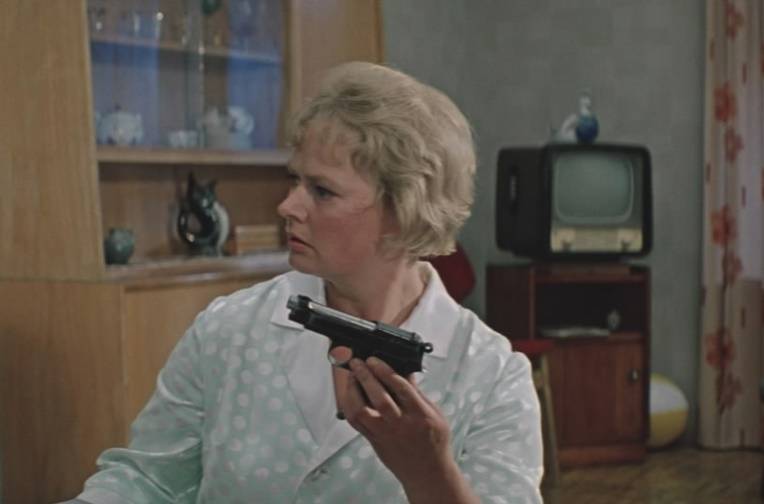
"Nadya Gorbunkova is an impeccable housewife, a caring mother, a faithful life partner." Nina Grebeshkova received 800 rubles for this role, and ... she held on for a real "Beretta"!
- M-ma-yo...
- Where?..
- At-there...
- "From there"?
"The Diamond Arm"
stories about weapons. Very often in the cinema it happens like this: they arm the heroes with anything, and then the moviegoers wonder what it looks like and whether it is a “homemade” product. In the case of the film comedy "The Diamond Arm", such disputes are inappropriate. It clearly shows that for some reason the main character was armed with a Beretta M1934 pistol, as if the police did not have our Soviet Makarov for him. But that's how it happened, and the film did not get worse from this. After all, this is a "gun from there." However, not only our filmmakers who shot this film liked it. In foreign sources, for example, one could come across a mention that this particular pistol, the Beretta M1934, was a coveted trophy and ... a memorable souvenir for American soldiers returning from the war from Europe. That is, it is obvious that it was a very perfect pistol, because no one brought the same Glisenti from the war. And today we will tell you about how for 19 years of our stories this gun became what it became... what it became.
Well, you have to start with the fact that the weapons company Pietro Beretta from Gardone Val Trompia, near Brescia, began the production of gun barrels back in 1860. Then she began to produce sporting weapons and by 1900 they had reached an enviable quality. The company did not produce military weapons, but when the First World War began, she reluctantly had to do this.
And in 1915, she released her first pistol and has since become one of the largest pistol manufacturers in the world. The Beretta pistol of the 1915 model was hammerless and rough in appearance, but in quality it was much better than the Glisenti pistol and the old Bodeo revolvers that had been adopted before.
It was designed by Tulio Marengoni chambered for the 9 mm Glisenti cartridge, but there was also a 7,65 mm caliber model, which was launched in 1917. By the way, he could also shoot 9-mm caliber Browning pistol cartridges, since they differed from Glisenti cartridges only in a large charge of gunpowder. The design of the pistol was fairly traditional, and the dimensions were quite large, even compared to the German and later Walther pistol. The main thing that distinguished it from other pistols of that time was a large cutout on the bolt. Not a small “window” through which the cartridge, along with the bullet, could barely fly out when the shutter was operating, namely, a cutout that opened a significant part of the barrel. Interestingly, the production of this pistol in Italy lasted from 1915 to 1945, so a lot of them managed to be released during this time.
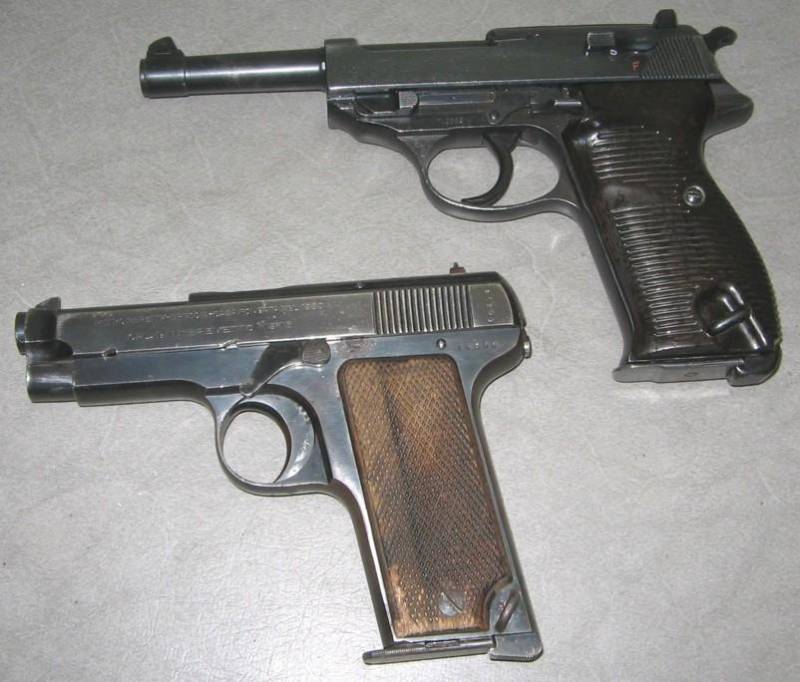
"Beretta" M1915 chambered for caliber 9-mm "Glisenti". Nearby for comparison is the "Walter" P38 model 1938. Photo https://littlegun.info/
In 1919, the model was improved and received the designation M1915 / 19, and then the 1922 model appeared, which even got into the Italian army. But then the company was not up to new military models, as peace came to Europe, and for the civilian market the company began to produce 6,35-mm pistols under the most popular Browning cartridge at that time.
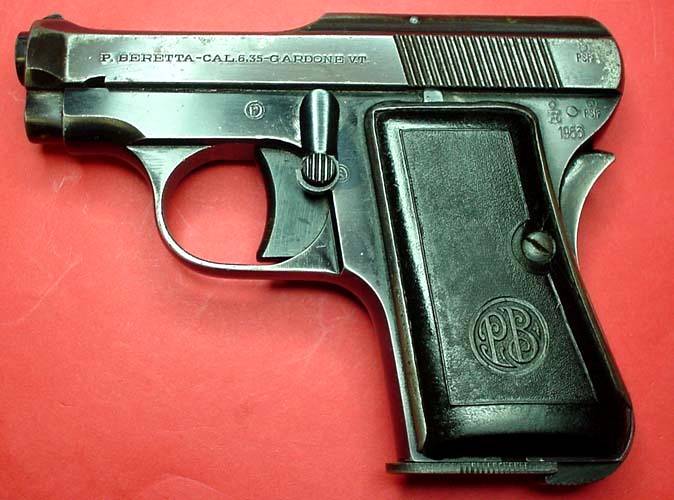
"Beretta" 1919 "418" caliber 6,35 mm - just such a pistol at the very beginning of his career was used by the legendary James Bond. Photo https://littlegun.info/
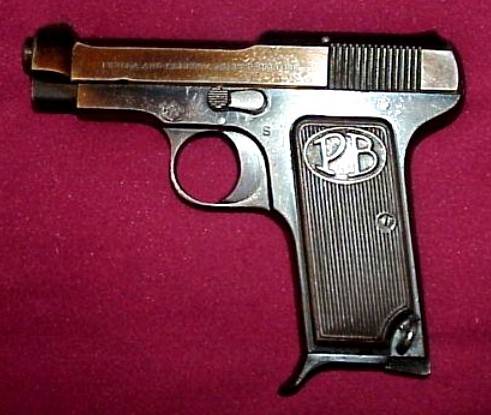
"Beretta" 1922 caliber 7,65 mm. Photo https://littlegun.info/
Behind him appeared the M1923 pistol, the main difference of which from the previous samples was an open trigger with a hole. But the company's management understood that such a pistol was a temporary measure, and that the military should be interested in something even newer and more perfect. Therefore, work began on a new pistol, which was supposed to attract the attention of the military and, accordingly, would give the company the opportunity to receive a profitable order from them for its production.
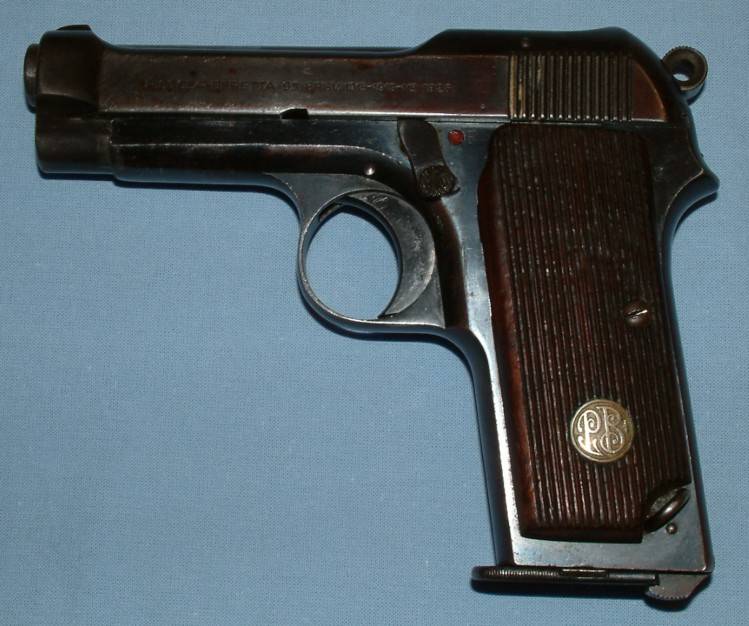
"Beretta" 1923 caliber 9 mm. Photo https://littlegun.info/
This is how the next pistol, developed in 1931, appeared, retaining all the main characteristics of the pistol of 1923, but at the same time turned out to be more compact and lighter. The new pistol was chambered for the classic 7,65 Browning cartridge and eventually became the basis for the creation of the next 1933 model of the year, which had only three features: the handle slope, wooden grips and slight changes to the trigger.
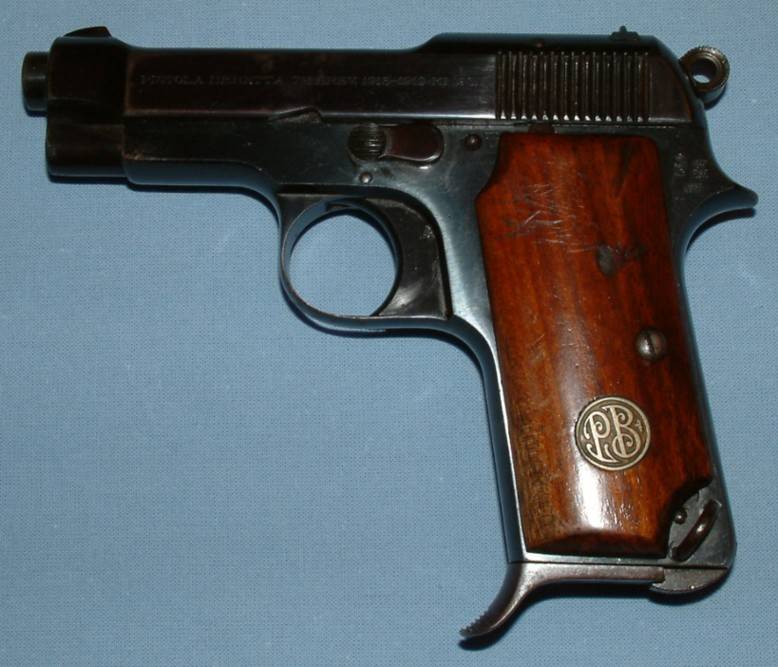
"Beretta" 1931. Photo https://littlegun.info/
The army did not adopt the 1931 pistol model, but the Italian Royal Navy became interested in it. Pistols of the Italian Navy are easily recognizable by the medallion on the grips with the inscription RM and an anchor between the letters.
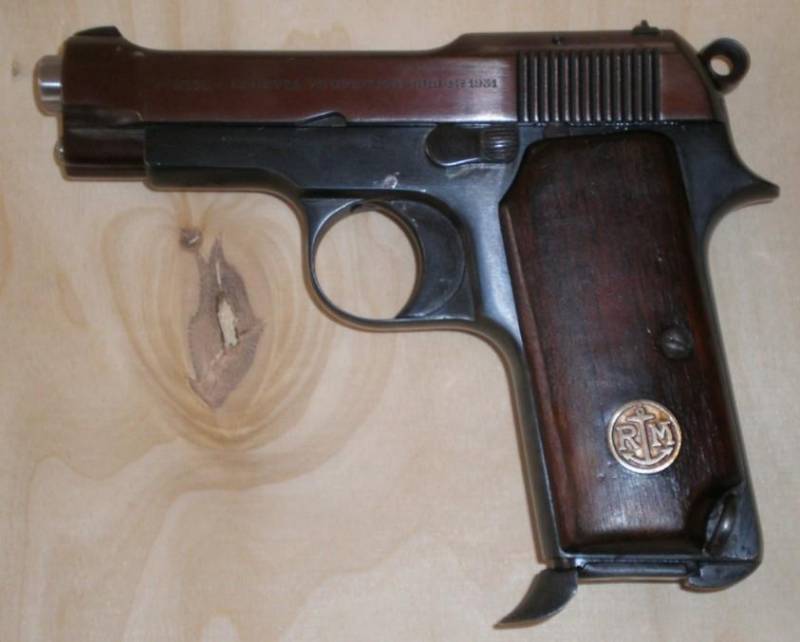
Civil samples on the medallion have the traditional monogram RV (Pietro Beretta). Photo https://littlegun.info/
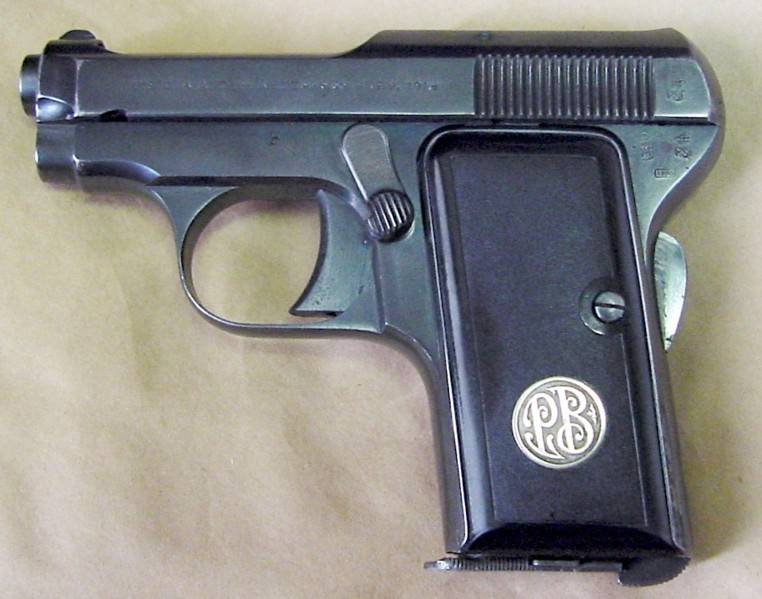
"Beretta" 1933. Photo https://littlegun.info/
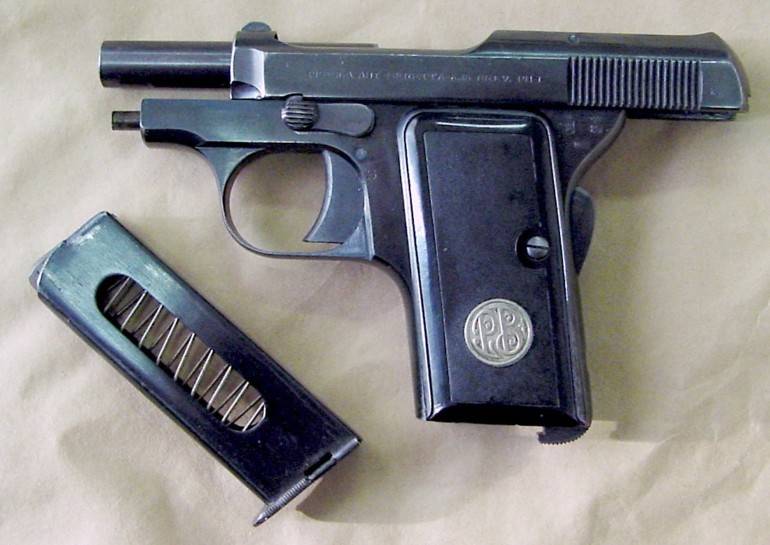
"Beretta" 1933 had a shutter, which was fixed in the rear position after shooting the last cartridge, which was very convenient for the shooter. Photo https://littlegun.info/
So gradually, step by step, the Beretta company went to create a pistol that meets the highest requirements. And in 1934, such a pistol, which practically did not differ from the M1933, was officially adopted by the royal army. The only difference, again, was that the “cheeks” on the handle were first made of wood, and then they became bakelite.
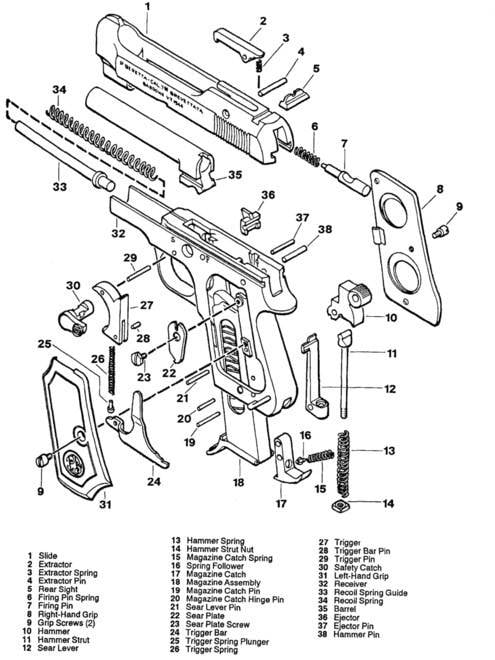
Scheme of the device of the pistol "Beretta" M1934
The Model 1932 also used the .380 ACP (9×17mm) J.M. Browning Colt Automatic, which was renamed 9 "corto" (short) in Italy, apparently to distinguish it from the 9- mm Glisenti cartridge, the sleeve was a few millimeters longer, which is why it was nicknamed the 9 mm "lungo" (long). But all this only led to confusion among cartridges and pistols of 9-mm caliber.
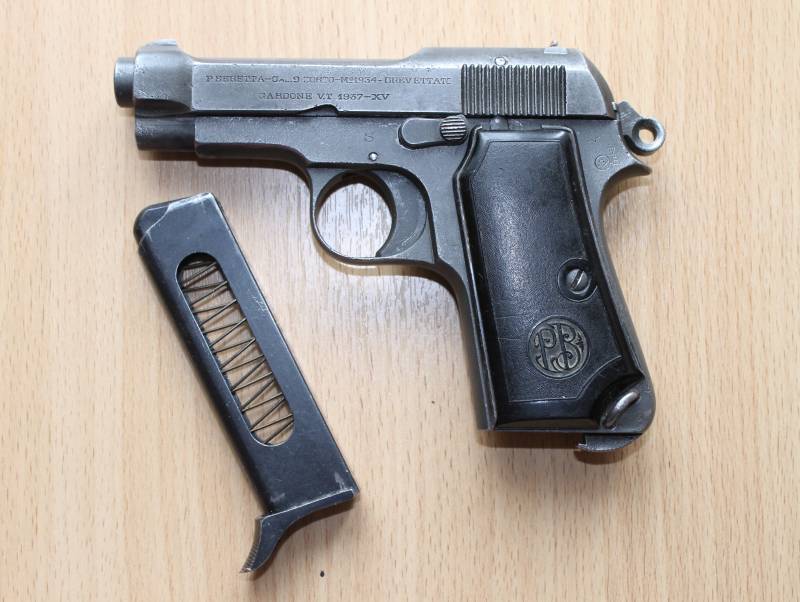
"Beretta" М1934 produced in 1937 with the magazine removed. Details such as the strap clip, magazine latch and magazine spur are clearly visible. Author's photo
Be that as it may, but after comparing their pistol with the German "Walter" PP, the Italian military chose the "Beretta" and adopted it under the designation "Modello 1934 calibro 9 corto".
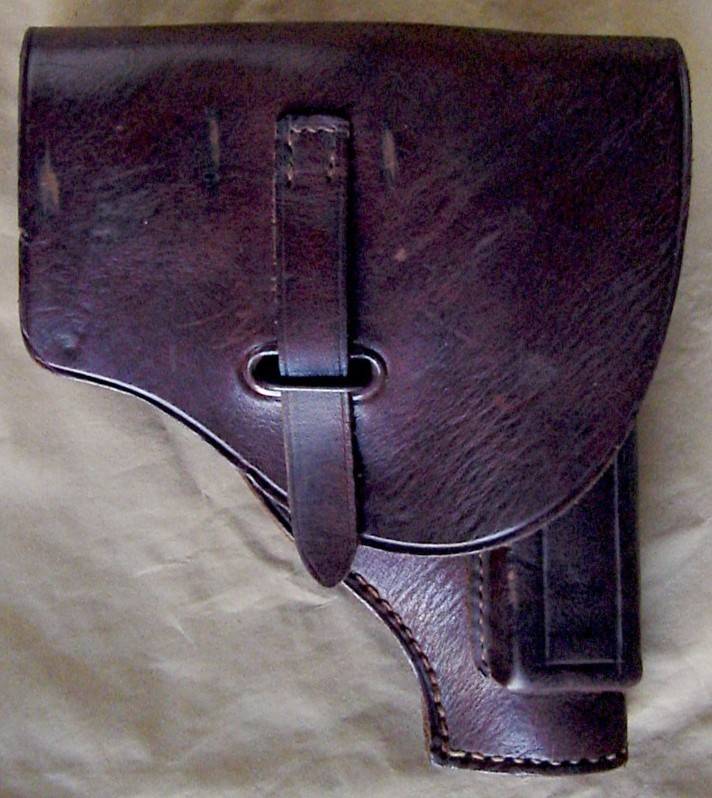
Beretta M1934 pistol holster. Photo https://littlegun.info/
The 9mm pistol went into the army. But for the Air Force and Navy, the 7,65 caliber version, the 1935 model, was preferable, the production of which was carried out in parallel with larger caliber pistols.
It is interesting to note that these two pistols are almost identical, but are designed in such a way that it is impossible to replace barrels or magazines in them.
Experts note that the Beretta M1934 (like the 1935 model) was a high-quality weapon and had practically no competitors in its class. They attribute to its advantages high reliability and ease of use, qualities that are necessary for any weapon on which a person’s life may depend in an extreme situation.
It is also necessary to take into account such circumstances as the minimum cost of manufacture and the simplicity of the repair necessary for the pistol, which he needed only in the rarest cases. Since he did not need high-powered ammunition, the process of learning to shoot from it was quite easy and did not require a lot of ammunition.
The release of the M1934 and M1935 went on in Italy throughout the Second World War, although the war did not affect the quality of their manufacture in the best way, especially when it comes to weapons produced in 1944 and 1945. However, it turned out that manufacturing defects mainly affected the appearance of these pistols, and they functioned just as flawlessly.
The Germans, who occupied Italy, also liked this pistol, and they adopted it under the name "Pistola Beretta Cal 7.65 M35 SA Armaguerra-Cremona 1944". I had a chance to hold it in my hands, and it turned out that although the tilt of the handle is quite small, it lies very comfortably in the hand. The “spur” on the store also helps in this. Thanks to the “spur” and the handle in the hand, it is comfortable to hold, and the store can be pulled out of it without much difficulty. Although the magazine latch at the base of the handle has a very tight spring, so it is not very convenient to move it. But there is no danger of losing the store.
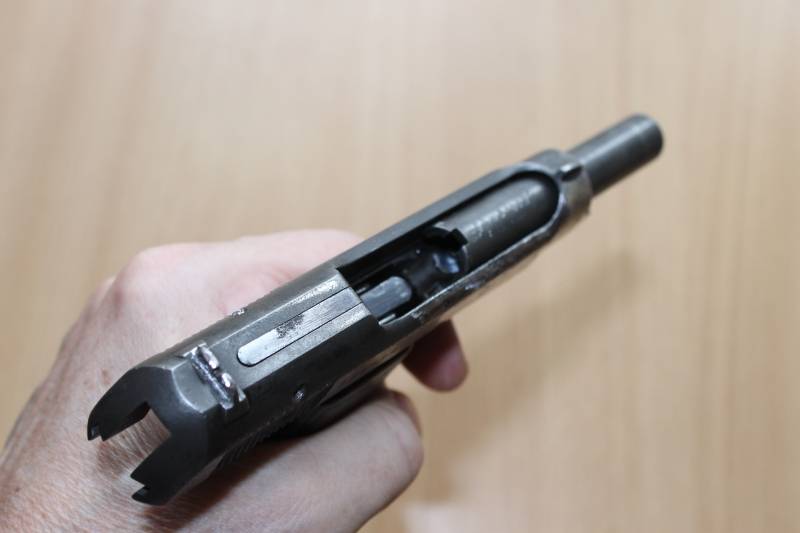
"Beretta" M1934 in hand. The extractor spring located on top is clearly visible, due to which the cartridge cases are ejected from the pistol straight up. Author's photo
The store feeder is also a shutter delay. As soon as the cartridges are used up, the shutter is stuck in the feeder ledge and remains in the rear position. When an empty magazine is removed, the bolt moves forward, but only if it has not been locked in this position by a safety lever. Such fixation of the shutter is necessary when the pistol is not completely disassembled.
Well, this pistol found its use a year later, during the intervention in Ethiopia, and continued to be used until 1983 - an enviable record for any weapon. "34th" managed during this time to serve in the army, and in the police, and in parts of the carabinieri. And everywhere he showed himself from the best side. By the way, James Bond also used it at the beginning of his career as a super spy!
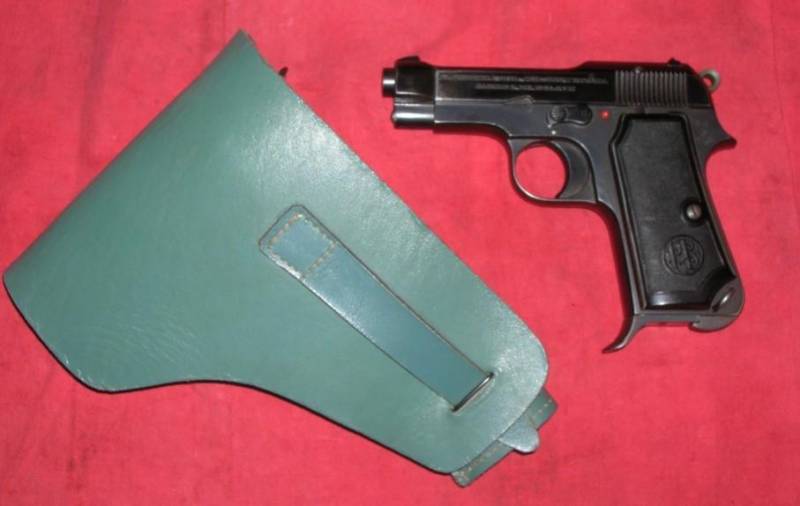
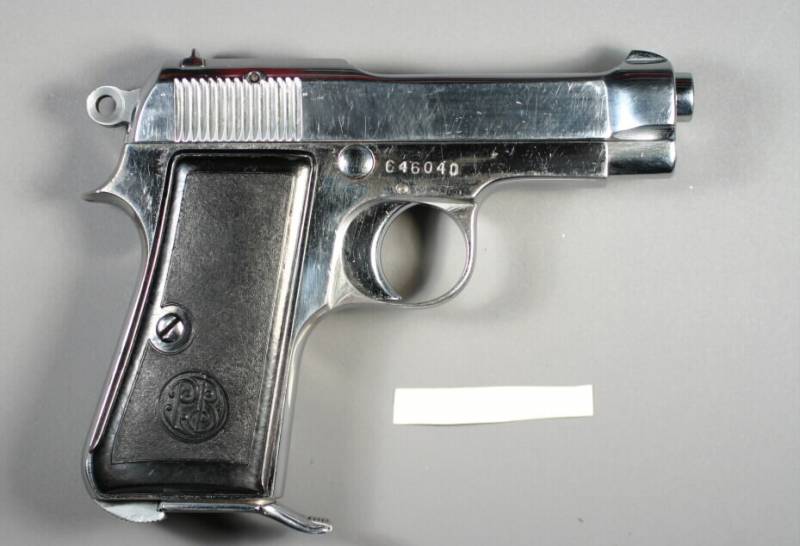
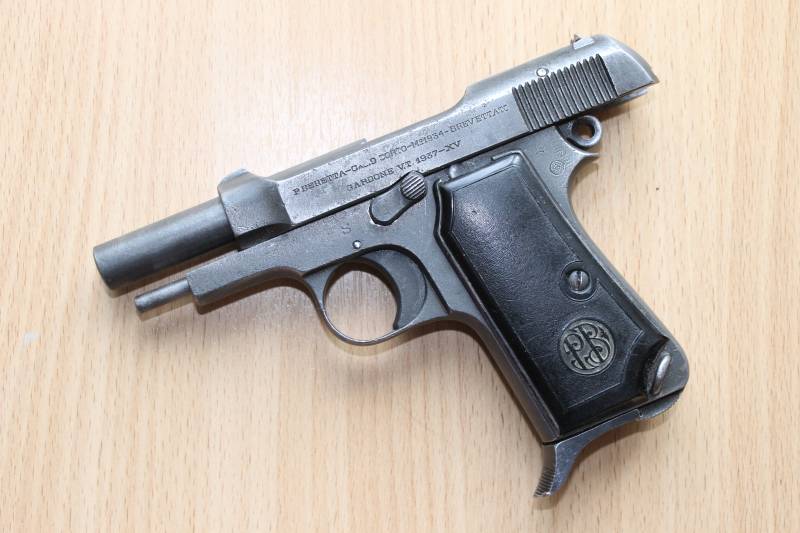
Information